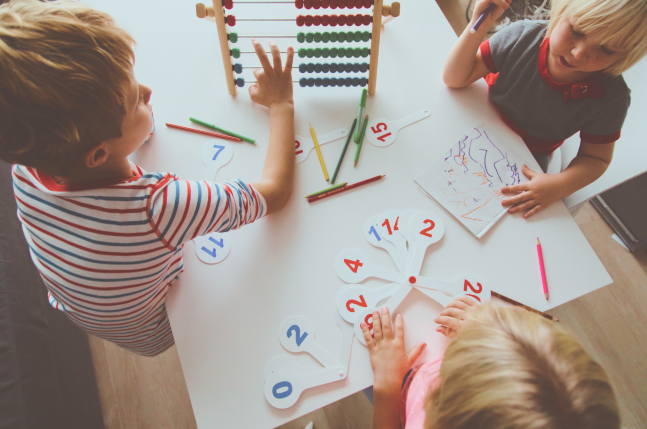Maths is more than numbers: how to build strong relationships with mathematics
By Heather Lewis on September 18, 2023 in Curriculum
PLD consultant Heather Lewis shares strategies to help students build positive relationships with mathematics.

Mathematics is an essential subject that forms the foundation of other critical learning. However, many students struggle with maths, and their lack of confidence in this subject can negatively impact their overall academic performance. It is our responsibility to support our students and help them build positive relationships with mathematics.
In this blog I have used my work with Accelerating Learning in Mathematics (ALiM)[1] which is a short intervention for year 1-10 and are not meeting expectations mathematics.
In ALiM we discovered that students' attitudes and dispositions towards mathematics play a crucial role in their ability to learn and achieve. Our evaluation found that when students had a positive mindset towards maths, they were more likely to engage in class, persist through challenging problems, and ultimately achieve better results. This led us to prioritise strategies focusing on developing a growth mindset and building positive maths attitudes. We believe it is a critical component to unlocking student potential and fostering success in mathematics.
Create a welcoming and inclusive learning environment
Mixed ability groups create a culture of inclusiveness and mitigate the potentially negative effects of fixed ability grouping. There are various methods to ensure that all students within mixed ability groups can thrive. One approach is to utilise low-floor, high-ceiling activities, which enable students to approach math in ways that are suited to their level of knowledge and comprehension.
A safe and encouraging classroom culture is nurtured through valuing effort and persistence, not just getting the answer correct.
Effective classroom talk helps to create an inclusive culture and is a potent means of teaching and learning. The Common Practice Model identifies a number of strategies that teachers may use to increase the effectiveness of communication. Dialogue that is rich and interactive helps students to understand complex concepts and fosters a community of learning that revolves around making meaning.
To promote a discourse-rich classroom environment, a teaching technique many teachers use is Talk Moves[2]. Using Talk Moves and encouraging students to ask questions and take risks fosters a growth mindset, which promotes the idea that intelligence and abilities can be developed through hard work and dedication. This mindset encourages students to view mistakes as learning opportunities rather than failures.
Relevance and connectedness are key
Another way to support students' relationships with mathematics is to make the subject more engaging and relevant to their lives. Teachers can use real-world examples to illustrate how maths is used in everyday situations, such as interpreting Google Maps, measuring ingredients for cooking, or figuring out the cost of a purchase. When students see the practical applications of maths, they are more likely to be motivated to learn and understand the subject.
Multiple opportunities to learn
Adopting the principles of UDL (Universal Design for Learning)[3] can help all students to engage in meaningful mathematics learning. This includes providing multiple approaches to solving problems, using manipulatives or visual aids to help students understand concepts, and allowing them to work at their own pace. Teachers can help build confidence and success in the subject by providing different ways to learn and practise maths.
The significance of productive struggle in learning
Encouraging productive struggle is an effective way to promote problem-solving skills among learners. Problems that offer multiple solutions and strategies, like Chicken Run[4] on Tāhūrangi, help students develop critical thinking, creativity, and perseverance.
For example, by allowing students to explore different dimensions for a rectangle and calculate the area of each design, the problem invites them to try different approaches.
These types of problems allow for all students to succeed, regardless of their level of mathematical proficiency. Since there are multiple strategies that can be used to solve the problem, students can choose the approach that best suits their strengths and work at their own pace.
Celebrating success and progress
Finally, you can promote a positive attitude towards mathematics by acknowledging and celebrating students’ successes. Recognising when students have made progress, no matter how small, can help them feel more confident and motivated to continue learning. Providing opportunities for students to share their mathematical thinking and strategies allows them to feel valued and appreciated for their unique perspectives.
In summary, supporting student relationships with mathematics requires creating a welcoming and inclusive learning environment, making the subject more engaging and relevant, differentiating instruction, and promoting a positive attitude towards mathematics and statistics. By implementing these strategies, teachers can help students build confidence, develop a growth mindset, and ultimately achieve success in maths and beyond.
References:
Accelerated Learning in Mathematics (ALIM) - MOE-funded programme for students (PfS)
2. Chapin, S. H., O’Connor, C., & Anderson, N. C. (2003). Classroom discussions using math talk in elementary classrooms. Math Solutions, 11, 1-3.
3. Ministry of Education. Universal Design for Learning.
4. Ministry of Education. The chicken run.
If you have any questions about this article
Other articles you might like
If you are a mathematics fanatic, like me, you may also enjoy it for the logical and methodical way problems are solved.
Innovative learning environments (ILE) are popping up all around Christchurch.
As I am new to the Evaluation Associates team, I am drawn almost immediately to Michael Absolum’s touchstone book ‘Clarity in the Classroom’ where the Archway of Teaching and Learning Capabilities is thoroughly explored.
